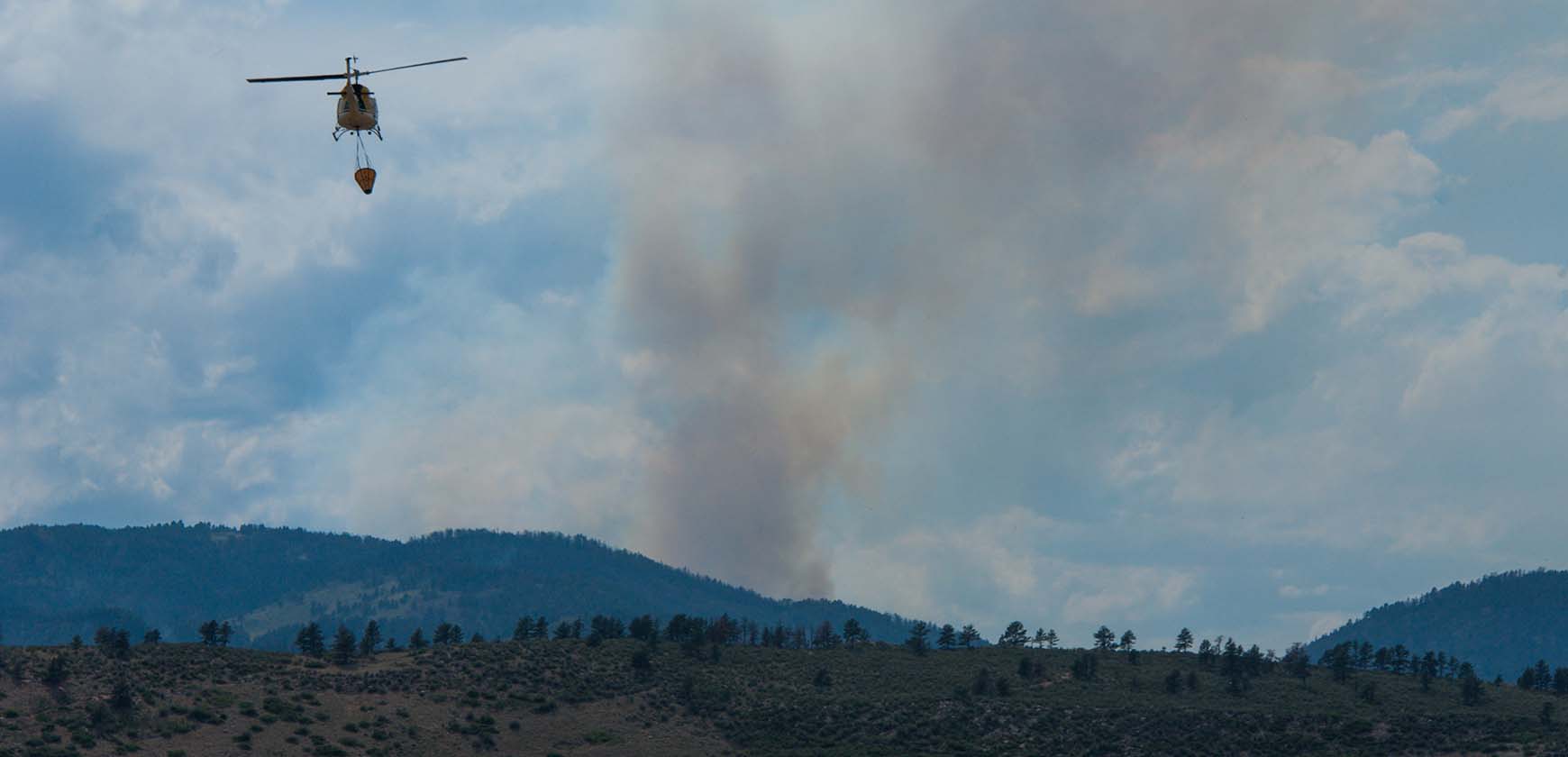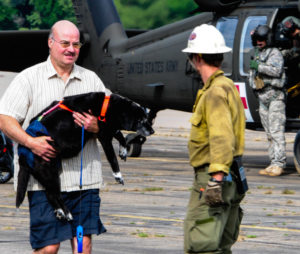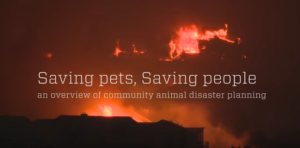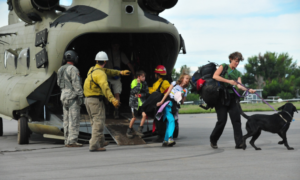
When there’s a disaster at home and you need to leave suddenly, you grab your keys and a wallet or purse. But what about pets, horses, chickens and other larger animals that might be part of your household?
Dr. Ragan Adams, a Colorado State University Extension veterinarian, recently helped counties across the state develop animal disaster response plans, so that communities and individual residents are better able to ensure the evacuation and safety of pets and livestock during floods, wildfires and other calamities. The team created a template that anyone can use to help with evacuation plans for pets and service animals.
PETS Act changes emergency preparedness
Within one year after Hurricane Katrina, Congress passed the PETS Act to ensure that state and local emergency preparedness plans address the needs of people with household pets and service animals. Its need was clear after nearly 600,000 animals died or were stranded during the 2005 hurricane, and more than half of the people who refused to evacuate stayed because they were not able to take pets.

“Every county’s emergency plan has to include this in order for them to get Federal Emergency Management Agency funding,” Adams said. With financial support from the U.S. Department of Agriculture, local CSU Extension agents involved county partners in crafting their disaster response plans.
“Emergency managers know about helicopters, roads and bridges, but animal expertise is a whole new picture,” Adams said. “You need the emergency manager working with people who have expertise in animals. County extension agents provide a vital link in the community because of the vast number of relationships they have, and local knowledge.”
It takes a village to save pets, people
In a video — “Saving pets, saving people” — that accompanies the toolkit, county emergency managers, agricultural agents, firefighters and animal shelter managers, among others, discuss their roles in the project and what happens when disaster hits. Larimer and Routt counties, which include Fort Collins and Steamboat Springs, respectively, are featured in the video.
“The challenge that we have here is how do you evacuate people, and get them to evacuate and take care of their pets?” said Chuck Vale, field manager with the Colorado Division of Homeland Security and Emergency Management.
 “The more prepared a person is for a disaster, both for themselves and the animal, the better we can help them,” said Jessica Sorensen, Larimer County Disaster Animal Response Team Community Outreach and an animal shelter volunteer.
“The more prepared a person is for a disaster, both for themselves and the animal, the better we can help them,” said Jessica Sorensen, Larimer County Disaster Animal Response Team Community Outreach and an animal shelter volunteer.
Adams said that partnerships were key to this project. “That’s what community engagement means,” she explained. “The community has the problem, and the community solves their problem. CSU experts assist where they are needed.”
Animal disaster plan can be used beyond Colorado
In Colorado, residents have witnessed a lot of disasters, including the High Park and Waldo Canyon fires in 2012 and floods along the Front Range in 2013. During the floods, more than 1,700 people and 800 pets were airlifted out of Larimer County. The toolkit developed here could easily be used by other states.
Social work faculty lend a hand
Professor Victoria Buchan and Associate Professor Louise Quijano of CSU’s School of Social Work lent their expertise in community capacity building, or the process a community undergoes to solve a particular challenge, to creating the animal disaster response plan. They helped secure the USDA grants, evaluate the community process of developing plans, and write the final toolkit.
Their insights about how communities work together to solve a collective challenge make the toolkit more valuable. Some of their important observations include:
- A diverse group of relevant local stakeholders must be involved from the start of the process.
- Each response plan will look different but it must fit the community.
“Some are vacation communities, some are agricultural communities, some are ski communities, and some are urban, with lots of pets,” Buchan said, adding that the onus is on local residents and planners to be sure the plan fits local needs. “It’s really a community project, it can’t be CSU leading it. It works much better if the communities do it themselves. There has to be a community willingness to continue this.” - Responsibility of pet owners to prepare for their animals must be emphasized continually. “Typically people don’t have a plan for their pets,” Quijano said. “They need food, water, medications and vaccination records ready to go on a moment’s notice.”
- Volunteers are essential to the response and suggestions are included on forming, training and keeping this valuable workforce together.
This new toolkit is based on one initially developed by PetAid Disaster Services. Embedded in the new online version are webinars by Debra Schnackenberg, PetAid’s animal disaster expert.
“There are droughts in California, recent floods in Houston, Hurricane Sandy in New York, and tornadoes that fly around in the spring. The frequency of those natural disasters aren’t decreasing,” Adams said.
Livestock and horses aren’t covered under the PETS Act, but they are included in this toolkit.
“We’re encouraging counties to work with ag agents and animal control and look at both large animals as well as small animals and make sure that they have a plan that’s tied to their county emergency operations plan,” said Vale, who is also a rancher.

Anecdotal stories show that people cope better during a disaster when they have their pets. “You lose all your possessions, but your kids are consoled because they have their pets,” Adams said.
People want to regain normalcy when they are separated from their homes during disasters, said Bob Herrfeldt, director of The Ranch in Larimer County, which serves as a shelter during evacuations. “Everyday normalcy for all of us that have animals is having your family and animals around you,” he said.
Adams said making sure that you have a community network when it comes to your pets is also important.
“You need people that know your animals and can help you with your animals if you’re not there or blocked by the disaster,” she explained. “Working on this project reinforced my faith and belief in the importance of community.”
National PrepareAthon Day is Saturday, April 30. America’s PreparAthon is hosting a Periscope broadcast at 1 p.m. EDT on Wednesday, May 4, to discuss ways to prepare your pet for an emergency. Topics will include what to put in your pet emergency supply kit, shelter tips, and other emergency planning needs.